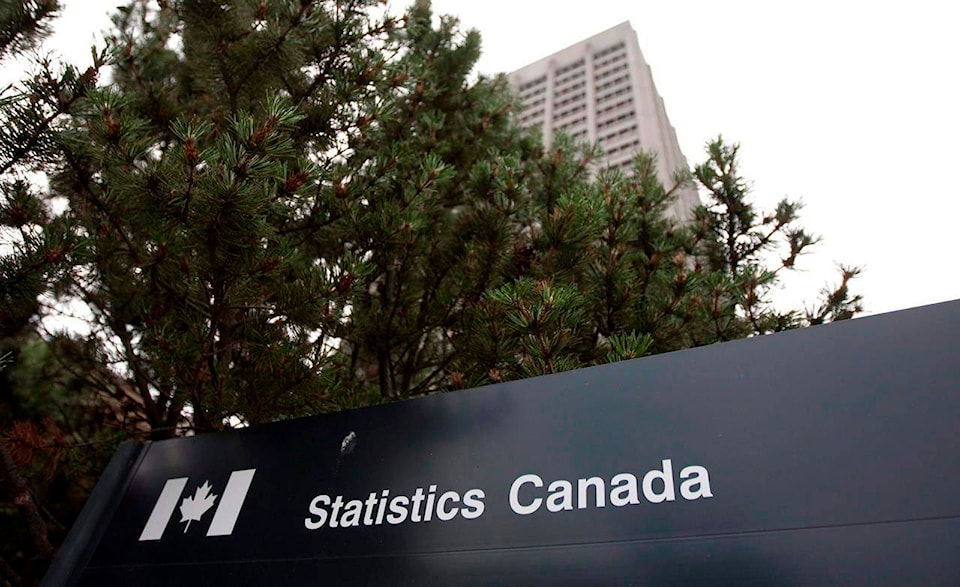The Canadian economy lost an unprecedented one million jobs in March — the worst recorded single-month change — as the COVID-19 crisis began to take hold, lifting the unemployment rate to 7.8 per cent, Statistics Canada reported Thursday.
The loss is eight times worse than the previous one-month record, yet economists warned it will likely be even worse in April, when the impact of physical distancing practices and other measures became clearer and millions of Canadians began receiving emergency federal aid.
All told, Statistics Canada said some 3.1 million Canadians either lost their jobs or had their hours slashed last month due to COVID-19, a figure that painted the dramatic and sudden shift in the job market.
The national unemployment rate now sits at a level not seen since October 2010 and represents the biggest monthly change over the last 40-plus years of comparable data.
More than three years of job gains were wiped out in a single month, BMO chief economist Douglas Porter pointed out in a note, which suggested not all of the losses will be made up when public health measures and shutdowns begin to lift.
“The economic impact of the massive shutdowns in March is here for all to see, and April will most likely drop even more deeply based on early EI claims figures,” Porter wrote in a report.
“But as shocking as these numbers are, the big issue is how long do the shutdowns last, and thus how persistent is this spike in joblessness; that is still very much open for debate.”
Statistics Canada retooled some of its usual measures of counting employed, unemployed and “not in the labour force” to better gauge the effects of COVID-19 on the job market, which has been swift, harsh and — as the agency’s report repeatedly noted — unprecedented in modern history.
READ MORE: 132,000 B.C. jobs lost just the start of COVID-19 impact, finance minister says
The number of people considered unemployed rose by 413,000 between February and March, almost all of it fuelled by temporary layoffs, meaning workers expected their jobs back in six months.
The report also noted that nearly 598,000 people dropped out of the labour force and were not actively seeking work, meaning they weren’t counted among the unemployed.
The number of people who didn’t work any hours during the week of the labour force survey increased by 1.3 million, the national statistics office said, while the number who worked less than half of their usual hours increased by 800,000.
Statistics Canada said the changes can all be attributed to COVID-19, which has led governments to order businesses to close and workers to stay at home to slow the spread of the pandemic.
It also warned that the number of people absent from work for a full week who weren’t paid — which hit a seasonally adjusted rate of 55.8 per cent — “may be an indication of future job losses.”
“It is expected that the sudden employment decline observed in March will have a significant effect on the performance of the Canadian economy over the coming months,” the agency said.
The federal response has been equally significant. Direct spending on federal emergency aid has totalled about $105.5 billion, not including about the same amount in loans and tax deferrals.
A separate report Thursday from the parliamentary budget officer estimated the effect of extra spending, combined with the loss in economic activity will push the budget deficit for the just-closed fiscal year to $27.4 billion.
Yves Giroux’s report forecasted the federal deficit for the fiscal year that started April 1 will top $184.2 billion. He suggested that more spending may be needed to support workers and businesses than those already announced.
“Moreover, after support measures are provided, fiscal stimulus measures may be required to ensure that the economy reaches lift-off speed, especially if consumer and business behaviour does not quickly revert back to ‘normal’ conditions,” Giroux writes in the new report.
Job losses were felt across all provinces, with the largest in Ontario, Quebec, British Columbia and Alberta. Ontario shed 403,000 jobs, Quebec lost 264,000, B.C. saw a drop of 132,000, and Alberta lost 117,000 compared with just one month earlier.
Most of the job losses were in the private sector, with the greatest employment declines observed for youth aged 15 to 24. The youth unemployment rate in March was 16.8 per cent, the highest it has been since June 1997.
Few sectors of the economy were spared.
Even within industries that were especially hard-hit — restaurants, hotels and other with public-facing services — not all occupations were equally affected.
Sales and service jobs — which represent about one-quarter of the Canadian workforce — accounted for just over 60 per cent of all job losses in March, dropping by an estimated 625,000.
These workers are relatively low-paid, which the agency said suggests “the first workers to experience job losses as a result of COVID-19 are among those least able to withstand economic hardship.”
The Canadian Press
